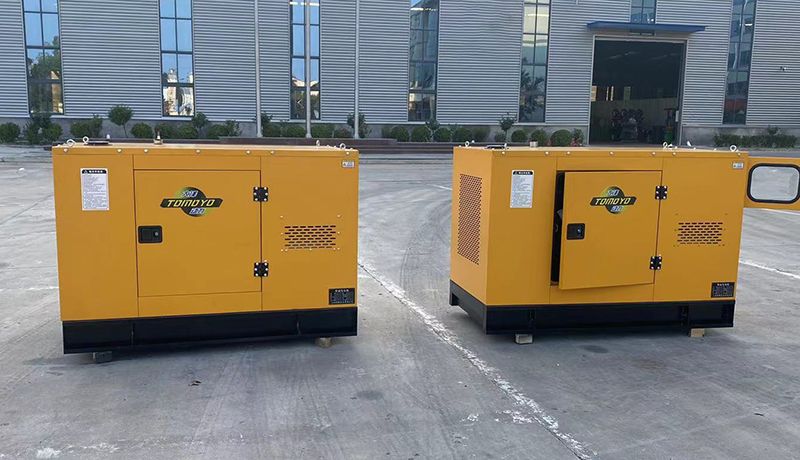Paralleling System Deployment Guide How to Achieve Stable Coordination of Multiple Generator Sets
Release time:2025-09-13 Click:20
With the global demand for reliable power growing across industries, many projects now require more than a single generator to meet capacity, redundancy, and flexibility needs. Paralleling systems—also known as generator synchronization systems—allow two or more generator sets to work together as one unified power source. For international buyers sourcing from Chinese manufacturers, understanding how these systems work and how to deploy them correctly can ensure long-term performance and cost-effectiveness.
This article explores what a paralleling system is, why it matters, the steps to deploy it successfully, and practical tips on maintaining stable operation. We also address common questions buyers ask when considering multi-generator setups.
What Is a Paralleling System
A paralleling system connects multiple generator sets so they share load and supply power to a common bus. It synchronizes voltage, frequency, and phase angle across all units, ensuring seamless power delivery. Once synchronized, generators can automatically balance loads, add or remove units as needed, and provide redundancy during maintenance or failure.
Benefits of Multi Generator Paralleling
Scalability: Add generator sets incrementally to meet growing power needs without replacing the entire system.
Redundancy: If one generator fails or requires maintenance, others continue supplying power, minimizing downtime.
Efficiency: Running fewer generators at higher load is more fuel-efficient than one oversized unit at low load.
Flexibility: Units can be dispatched based on load profiles, fuel availability, or emissions requirements.
Key Components of a Paralleling System
Generator Sets: Each must be compatible in voltage, frequency, and phase characteristics.
Paralleling Switchgear: Houses breakers, bus bars, and control panels to connect multiple generators.
Control and Synchronization Panel: The “brain” of the system, automatically matching voltage, frequency, and phase before closing breakers.
Load Sharing Controllers: Distribute active (kW) and reactive (kVAR) power proportionally among generators.
Communication Network: Links all controllers and enables remote monitoring, often via CAN bus or Modbus.

Steps to Deploy a Paralleling System
1. Assessment of Power Requirements: Calculate peak and average loads, future expansion, and criticality.
2. Selection of Compatible Generator Sets: Matching engine speed, alternator ratings, and voltage to ensure smooth synchronization.
3. Design of Switchgear and Controls: Customized for the number of units, expected load changes, and site conditions.
4. Installation and Wiring: Proper cable sizing, grounding, and bus configuration for safety and reliability.
5. Testing and Commissioning: Verify synchronization, load sharing, protection settings, and automatic transfer sequences.
6. Training and Documentation: Ensure operators understand control panels, alarms, and maintenance schedules.
Frequently Asked Questions
Q1: Can different brands of generators be paralleled?
A: Yes, as long as voltage, frequency, and control systems are compatible. However, integrating different brands often requires additional synchronization and load sharing controls.
Q2: How many generators can be paralleled together?
A: Modern systems can handle dozens of units, but practical limits depend on control complexity, available space, and switchgear design.
Q3: Is paralleling only for large installations?
A: No. Even small businesses can benefit by running two smaller generators in parallel instead of one large unit, improving redundancy and efficiency.
Q4: What happens if one generator trips while paralleled?
A: The paralleling switchgear automatically isolates the faulted unit while others continue supplying load. Advanced controllers can even start standby units automatically.
Q5: How does paralleling affect maintenance costs?
A: It often lowers costs because individual units can be serviced without shutting down the entire power supply, reducing costly downtime.
Case Study Resort Power Upgrade in Southeast Asia
A luxury resort on an island in Southeast Asia needed 2 MW of reliable power but wanted to minimize fuel costs and have backup during maintenance. Working with a Chinese generator manufacturer, the resort installed four 500 kW diesel generator sets connected through a paralleling system. The setup allows the resort to run only as many generators as needed, saving 18% in fuel and reducing emissions while maintaining uninterrupted guest service.
Maintenance and Operational Best Practices
Routine Testing: Run synchronization tests regularly to ensure controllers function correctly.
Load Management: Balance loads to prevent overloading one unit while others run lightly loaded.
Firmware Updates: Keep control systems updated to improve stability and cybersecurity.
Environmental Considerations: Provide adequate ventilation, sound attenuation, and weather protection for all units and switchgear.
Operator Training: Well-trained staff respond faster to alarms and perform preventive maintenance effectively.
Looking Ahead Smart and Hybrid Paralleling
Modern paralleling systems increasingly integrate with renewable energy and battery storage, creating hybrid microgrids. Intelligent controllers can manage diesel, gas, and solar sources simultaneously, optimizing fuel consumption and reducing emissions. Chinese manufacturers are at the forefront of supplying cost-effective hybrid-ready switchgear and controllers for export markets.
Conclusion
Paralleling systems transform multiple generator sets into a flexible, scalable, and reliable power solution. By synchronizing voltage, frequency, and load sharing, they deliver stable power for projects ranging from hospitals to data centers and remote resorts. For international buyers, partnering with an experienced Chinese manufacturer ensures access to high-quality equipment, customization, and after-sales support. By understanding the components, deployment steps, and maintenance practices outlined in this article, you can design a system that meets today’s demands and adapts to tomorrow’s growth.
Hot products
+86 15244567972
Contacts:Jack
